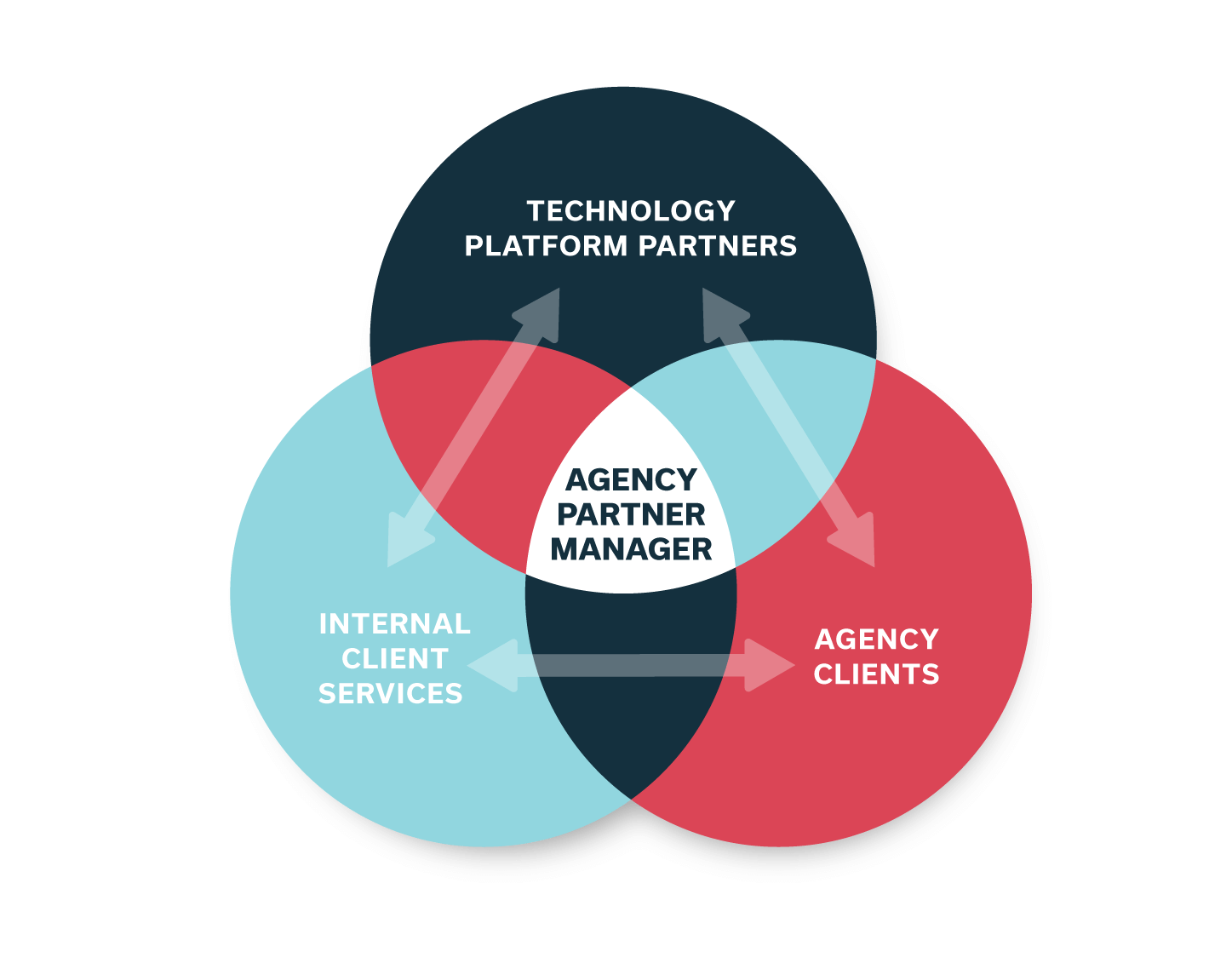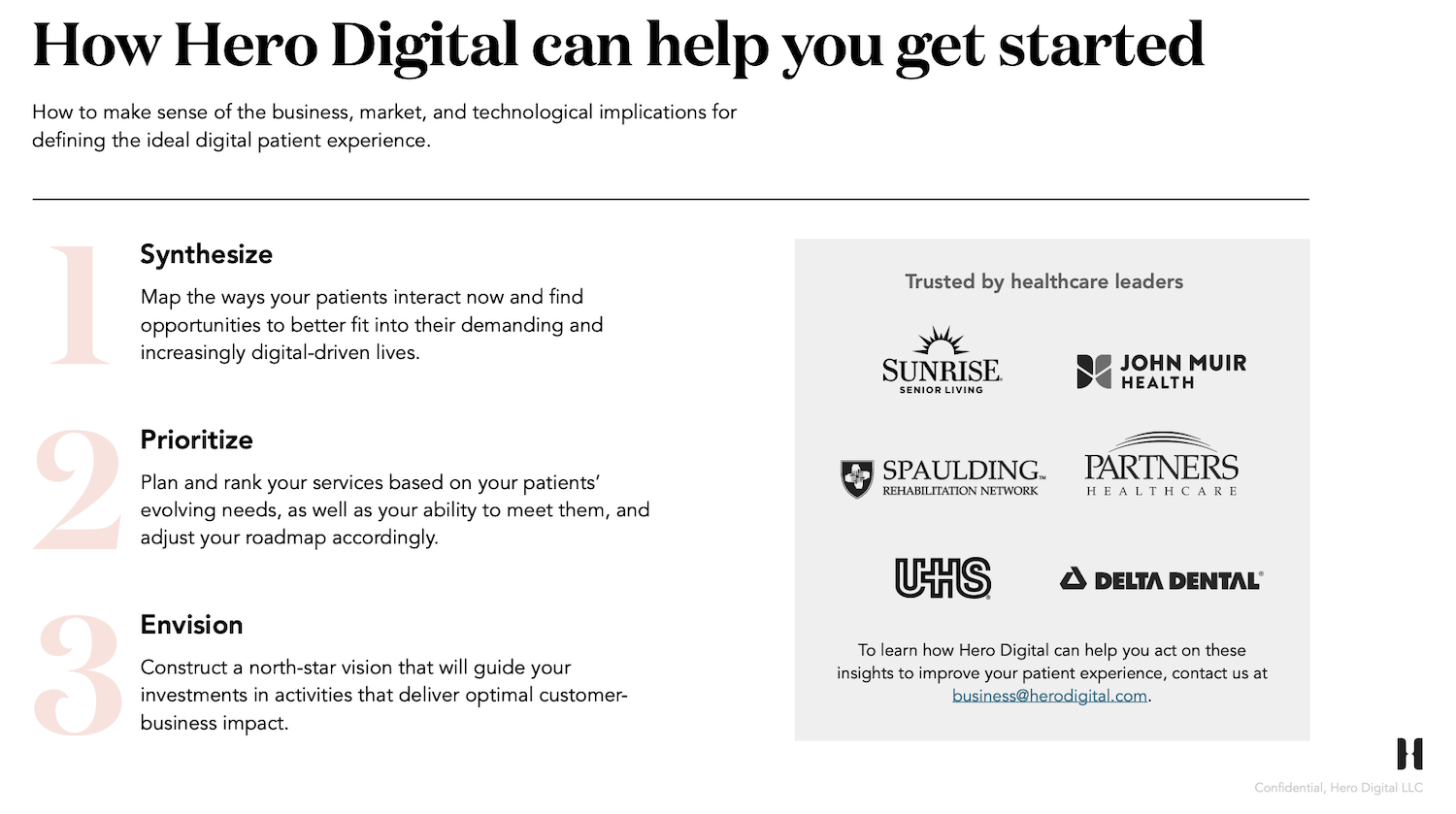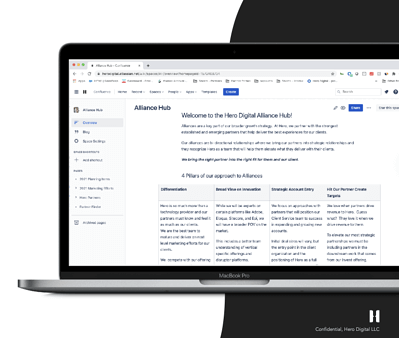As an agency partner manager, you’ve got a lot of relationships to support.
On one hand, you’ve got partners like Adobe, HubSpot, or Contentsquare looking to your team to be their biggest advocates. On the other, you’re providing clients with top solutions and services for their custom projects. And then there’s managing your internal team’s relationships between the two — your clients and your partners.
 As your partner ecosystem and employee count grows, you’ll need to invest in scalable practices that keep your internal and external communications running smoothly (also known as Ecosystem Ops). After all, you’ve seen what happens when there’s no longer a healthy balance between corresponding with partners and consulting with clients — nobody ends up happy!
As your partner ecosystem and employee count grows, you’ll need to invest in scalable practices that keep your internal and external communications running smoothly (also known as Ecosystem Ops). After all, you’ve seen what happens when there’s no longer a healthy balance between corresponding with partners and consulting with clients — nobody ends up happy!
We gathered insights from digital marketing agencies SmartBug Media®, Hero Digital, and Americaneagle.com to hear how they tackle common partnership challenges, so you can adopt their best practices in your everyday operations.
(Psst! We noticed something interesting: Agency partner managers assume various roles to fuel their team’s success. See if you can spot “the gatekeeper,” “the advocate,” “the agnostic,” “the thought leader,” “the intermediary,” and “the coach” in the sections that follow. 👀)
What to expect:
- Challenge #1: Protecting Your Team’s Time
- Challenge #2: Knowing When Your Partner’s Product Isn’t the Right Fit for the Client
- Challenge #3: Navigating When Competing Partners’ Products are a Good Fit for the Client
- Challenge #4: Getting Your Client’s Product Requests Into Your Partner’s Product Roadmap
- Challenge #5: Keeping Your Team Up to Date on Your Partner’s Solutions
Challenge #1: Protecting Your Team’s Time
You’ve launched five new partnerships, and your client services (CS) reps are excited to put your partners’ solutions to work for their clients. But then, your partners start piling on more enablement tasks, like webinars, certification programs, and one-on-one trainings. Your CS team’s calendar is looking busier than yours, and your clients aren’t happy with your team’s lack of availability. Some enablement resources are critical, while others really shouldn’t be getting into the hands of your team.
Tip: Filter Enablement Requests So Your Team Focuses Only on What’s Important
 Drew Cohen, Senior Director, Revenue Operations and MarTech at SmartBug Media®, says you should filter incoming communications and requests from your partners so that your CS team receives only what’s critical. Would a particular group training help your CS team overcome roadblocks in their current projects? If not, protect your team from unnecessary meetings that could take time away from clients.
Drew Cohen, Senior Director, Revenue Operations and MarTech at SmartBug Media®, says you should filter incoming communications and requests from your partners so that your CS team receives only what’s critical. Would a particular group training help your CS team overcome roadblocks in their current projects? If not, protect your team from unnecessary meetings that could take time away from clients.
In other words, be the gatekeeper.
Tip: Ensure Your Partner’s Enablement Requests Align With Your Partnership Strategy
Defining a clear partnership strategy will help you determine which of your partners’ products or features your CS team should know and which enablement requests to filter through.
“’Well, this use case wouldn’t be a great fit, this may not resonate with our strategist, but, oh, this might,’” says Cohen. “We have to constantly understand what’s going on in every department so that when we bring new technologies or partners into the fold either for our internal use or for our potential client use, there has to be a really good reason.”
For example, inbound marketing agency SmartBug Media analyzes its clients’ tech stacks to identify gaps in communication from one system to another (think: if a client’s CRM tool doesn’t send data to their customer success tool). When filtering enablement requests from existing partners, SmartBug Media determines if the partner’s product or feature already integrates with or can connect with existing tools in their clients’ tech stacks.
Develop a baseline for determining which partner communications should go to your team (or not) by:
- Defining the strategy your team is prioritizing for your existing and upcoming client projects; then, identify if your partner’s products align with that particular strategy (and if those extra enablement processes are necessary).
- Defining which leadership roles should prioritize maintaining the overall partner strategy (thus, serving as the gatekeepers) versus which leadership roles should prioritize implementing that strategy (and feed project-based information to and from the gatekeepers)
Challenge #2: Knowing When Your Partner’s Product Isn’t the Right Fit for the Client
 The client’s needs always come first.
The client’s needs always come first.
Tip: Pass on the referral
Whenever possible, identify if the partner’s product solves the client’s use case before engaging the partner with the client. Alternatively, if the partner refers the lead to you, but you know the partner isn’t a good fit for the potential client’s use case — simply pass on the referral.
Be the advocate.
“At the end of the day, we’re always focusing on the client,” says Jerry Boduch, VP of Strategic Alliances at digital agency Americaneagle.com. “If we need to deliver bad news to a partner, we will always deliver it from the lens of the client.” In fact, explaining how your client’s needs don’t match up with your partner’s solution could help them understand existing product gaps and inform the partner’s product roadmap.
Challenge #3: Navigating When Competing Partners’ Products are a Good Fit for the Client
If your client is interested in multiple products in a competing space, should you or should you not play favorites among your partners?
Tip: Give the client all the information they need to make a decision, without getting subjective
The team at Americaneagle.com maintains an agnostic stance if their clients are shopping around for a product. It’s a balancing act of making sure the client has all of the information they need to make a thoughtful decision and not playing favorites.
Be the agnostic.
Tip: Share Research-Based Insights With Potential Clients Through Content Marketing
 Educating potential clients about partners in the same competitive space also has its advantages. Your client will become better equipped to make a decision, and you’ll be leveling the playing field for multiple partners.
Educating potential clients about partners in the same competitive space also has its advantages. Your client will become better equipped to make a decision, and you’ll be leveling the playing field for multiple partners.
Be the thought leader.
George Haenisch, VP of Alliances at Hero Digital, says his team creates research-based content to generate ecosystem qualified leads (EQLs) for multiple partners. The customer experience and digital agency targets prospective clients by industry, by geographic location, and by those who fit multiple partners’ ideal client profiles.
The Hero Digital team sprinkles their partners’ products into relevant research papers.

 From Hero Digital’s research paper on “loyalty in healthcare”. Images courtesy of Hero Digital.
From Hero Digital’s research paper on “loyalty in healthcare”. Images courtesy of Hero Digital.
“It’s authentic, primary research, but now we take the technology and say, ‘Here’s how we implement the trend and the tactic that we just told you about in this partner’s technology,’” says Haenisch. “Additionally, we can amplify this content through our partners’ networks.”
During the discovery conversation, Hero Digital’s CS team uncovers the client’s needs and recommends the best products for their specific use cases.
Challenge #4: Getting Your Client’s Product Requests Into Your Partner’s Product Roadmap
Your partner’s product roadmap and what you wish you could solve for your client may not always align.
Tip: Feed Product Requests to Your Partners, and Gather Information for the Client
In some cases, the most you can do is feed the client’s requests or feedback to your partner. Let’s say you’re using an SEO platform for a particular client project. The client inquires about additional functionality around tracking revenue attribution, but that capability doesn’t exist in the application (yet). Relay the request to your partner.
Be the intermediary.
The more requests your partner receives for a particular product update, the more likely the partner is to build that feature into their product roadmap.
If your client’s dream feature is already in development, the partner may invite the client to participate in a pilot program. Your client will get a first look and may even get to contribute vital feedback to inform the final iteration of the feature.
Tip: Engage Your Partner’s Professional Services Team in the Project
There may also be cases when you decide to actively engage your partner’s professional services (PS) team to support specific requirements for a client project.
“We’ve had situations where we bring in the professional services arm of the software vendor to the deal,” says Jerry Boduch at Americaneagle.com. “Not only are they selling the software, but they’re staying involved. If there needs to be changes to the product or roadmap, they’re part of that conversation, too.”
For instance, Americaneagle.com engaged a partner’s PS team in a particular project when a client expressed interest in piloting the partner’s beta feature. Since the beta feature wasn’t live in the platform, Americaneagle.com’s CS team leaned on the partner’s PS team for their expertise in the feature’s capabilities.
Additionally, Americaneagle.com knew that some of the capabilities in the platform would change with the feature’s public launch. Americaneagle.com collaborated with the partner’s PS team to make sure the solution they were providing for the client would work well with the current and future states of the platform. The partner’s PS team reviewed and validated Americaneagle.com’s proposed solution to make sure it would provide value to the client in the long run.
Challenge #5: Keeping Your Team Up to Date on Your Partner’s Solutions
Your CS team needs to stay up to date on your partners’ products so they can provide the best consultative practices and implementation for your clients. But with a growing number of partners in your repertoire and an even longer list of client projects, how do you maintain your team’s level of expertise?
Tip: Develop Partner Enablement Resources for Your Sales and Client Services Teams
Agencies often have to know why a client should adopt a particular product and how to implement that product strategically.
Drew Cohen says the CS team at SmartBug Media prioritizes understanding the use cases for their partners’ products rather than all the functionalities and features of those products.
“The difficult part is knowing what to recommend and why. I’m focused on educating them on use cases and what to look for, and what to trigger in their minds when these things happen. Identify exactly which features to leverage with the product later,” says Cohen.
Be the coach.
For example, SmartBug Media looks to its video platform partner, Vidyard, to engage many of its clients’ prospects in post-webinar follow-up communications.
“If my client in SaaS is running a lot of demos, and if they could track engagement with those on-demand webinars and send that data back to the CRM to trigger an email, that’s a really powerful use case for Vidyard,” says Cohen.
Meanwhile, the partnerships team at Americaneagle.com enables its CS reps through:
- An intranet, which sorts Americaneagle.com’s partners by category and helps their team identify relevant partner contacts, partnership descriptions, and other details
- Confluence (think: a team workspace meets wiki)
- And other materials, like sales enablement decks and one-sheets
 Americaneagle.com’s intranet. Image courtesy of Americaneagle.com.
Americaneagle.com’s intranet. Image courtesy of Americaneagle.com.
Tip: Use Your Knowledge Base Tool to Share Client Successes
SmartBug Media links cards within their project management tool to pages in their knowledge base tool. As a CS rep builds out a project for a client, that rep can get context about solutions that have worked for similar use cases in the past and can access frequently asked questions.
Templatize the instructions in your project management tool to guide your CS team through best practices, new features, and use case examples existing in your knowledge base.
 Meanwhile, the team at Hero Digital is developing a research hub to help its team with deal forecasting and solution selling. The hub serves as a reference point for east and west-coast CS reps to learn about Hero Digital’s partnerships and use cases in real time.
Meanwhile, the team at Hero Digital is developing a research hub to help its team with deal forecasting and solution selling. The hub serves as a reference point for east and west-coast CS reps to learn about Hero Digital’s partnerships and use cases in real time.
“We’re training those front-facing folks to come to us to get enabled on the technology we’re using and also to get examples of where we’ve done it before,” says George Haenisch at Hero Digital.
Tip: Use Your Client Case Studies as Internal Enablement Resources
SmartBug Media also looks to its client case studies with partners as an enablement resource for the CS team.
“People can get educated on what other marketers in our business have successfully done for clients in our industry,” says Cohen. “People put a lot of focus on case studies for new business and sales growth, but we look at it as a big internal tool as well.”
 Excerpt from SmartBug Media’s case study with CallRail.
Excerpt from SmartBug Media’s case study with CallRail.
Cohen adds that SmartBug Media’s CS reps use their partners’ tools as part of their daily workflows. “If we’re going to promote a partner, we have to use their tools,” says Cohen.
—
So, yeah, there’s a lot going on. But these roles, they become you.




This is a test comment.
This is a longer test comment to see how this looks if the person decides to ramble a bit. So they're rambling and rambling and then they even lorem ipsum.